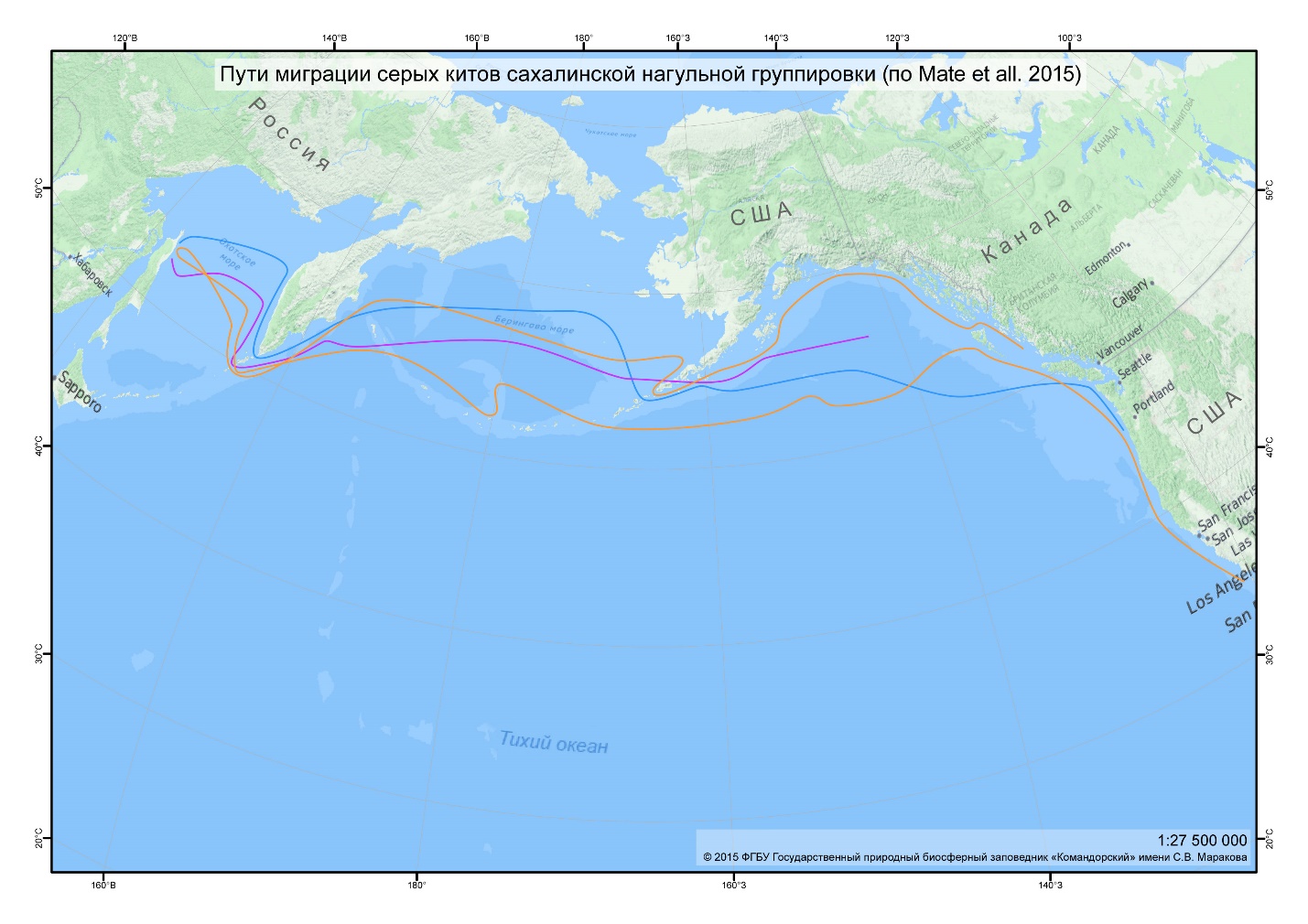The scientific stuff of the Commander Islands Nature and Biosphere Reserve managed to film the grey whale feeding process near Bering Island using drone. Grey whale is the only species of cetaceans, which feeds on benthal invertebrates. Unlike other baleen whales, the gray whale fills his mouth with sand, not water, and filters the sand through the whalebone.
During counts, which are organized in the framework of Ecological Monitoring Program, Scientific Department Employees of the Commander Islands Reserve used drone or UAV to take several videos of grey whale feeding process, which is very rare in the Commander Islands.
According to Nikolay Grebnitsky, who managed the Commander Islands in the XIX century, grey whales were very common around the Commander Islands. In 1990s and 2000s grey whales were a rare sight, but recently the situation started to change. In 2013, 2014, 2015 and 2016 we saw several individuals and in 2017 we spotted four of them, including a female with a cub.
Grey whale in the Commander Islands Reserve water area from UAV. Photo by Evgeny Mamaev.
Grey whales are one of the most ancient species of cetaceans. Their age is estimated at about 30 million years. These whales reach up to 15 meters and weight 30 tons – rarely up to 45 tons. Females are usually bigger, then males.
The grey whale is a baleen whale and feeds by filtering large quantities of substrate. Still it has a big difference from its relatives, as it prefers to take sand and not water. The whale filters the sand with its whalebones, which are situated on both jaws. The whalebone stops benthal invertebrates, such as mysids, amphopods and polychaetes, from being filtered out together with the sand. During one such procedure the grey whale may get up to 300 kg of food, which means more then 1 200 kg per day. They also like to eat schooling fish.
Grey whales take sand by moving on the right side. At this moment they show their flipper. Then they turn to horizontal position to filter the sand. Photo by Evgeny Mamaev.
These cetaceans have not lost their connection to the shore, as other species of this family. The main parts of their lives are spent on sandy shallows, where they feed, breed and raise their young. However, the grey whale is totally adjusted to long migrations and is the holder of the world record among all other animals.
Every year the animals can cover up to 22 000 km between Baja lagoon in Mexico – the only place, where they breed – and Chukotka Peninsula, Kamchatka or Sakhalin, where they spend their summer months to gain in weight. Early researchers divided grey whales into two groups: the Chukotka group and the Korea-Sakhalin group. But recent satellite data, collected in 2010s, give us the possibility to say, that the whales feeding in the northern waters of Bering Sea and those, which prefer Sakhalin region, breed only near California Peninsula.

Grey whales migration routes. Source: Mate et all, 2015
Pregnancy of grey whales lasts for about a year and females are capable to nearly stop the growth of the cub at some point for the birth to happen during the period of food abundance. Males are very attached to the females. That is why during whaling period, people saw that males refused to abandon dead females. Females have very close relations with their cubs as well.
The newborn whales of this species are up to 4.6 meters long and weight about half a ton. In the next 6 months they reach the length of 8 meters and start to feed independently. In this period they grow 2.7 cm per day.
Grey whale’s head. Photo by Evgeny Mamaev
The world population of this species is estimated at more than 20 000 species and it grows steadily for the recent decades, though in the beginning of the XX century the species was nearly extinct. In 1947 the hunt for the grey whale was banned and today only the indigenous people of Chukotka has the right to catch small quantities of these whales to sustain their traditions. They cannot use any kind of tools, except for hand harpoons and motor boats. They also cannot sell the acquired materials.
Friends! The film is now on its assembling stage. We will gladly share it with you as soon as it is ready!
Head photo – a grey whale uses its blowhole to create the fountain. Photo by Evgeny Mamaev









